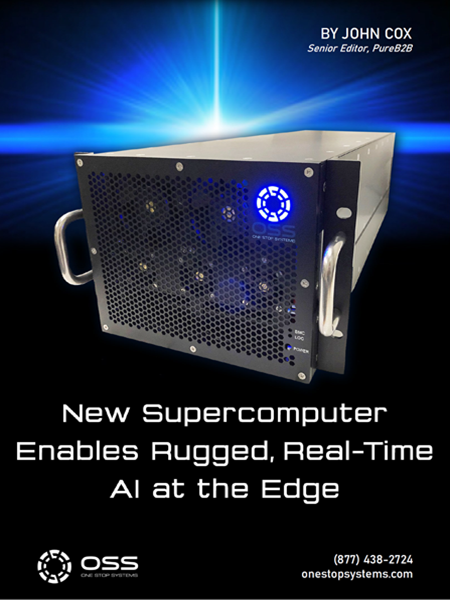Speculation abounds about Pat Gelsinger’s first public appearance as CEO of Intel at a webinar (5 pm Eastern Time) today that will capture close attention from a host of the company’s core audiences: customers, business partners, employees, industry and financial analysts – and the HPC community. The webinar, confidently called “Intel Unleashed: Engineering the Future,” […]
Gelsinger Speaks: Intel’s New CEO Debuts Today – What Will He Say?
Things to Know When Assessing, Piloting, and Deploying GPUs
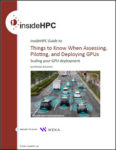
In this insideHPC Guide, our friends over at WEKA suggest that when organizations decide to move existing applications or new applications to a GPU-influenced system there are many items to consider, such as assessing the new environment’s required components, implementing a pilot program to learn about the system’s future performance, and considering eventual scaling to production levels.
The Graphcore Second Generation IPU

Our friends over at Graphcore, the U.K.-based startup that launched the Intelligence Processing Unit (IPU) for AI acceleration in 2018, has released a new whitepaper introducing the IPU-Machine. This second-generation platform has greater processing power, more memory and built-in scalability for handling extremely large parallel processing workloads. This paper explores the new platform and assesses its strengths and weaknesses compared to the growing cadre of potential competitors.
Modern HPC and Big Data Design Strategies for Data Centers – Part 3
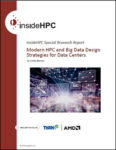
This insideHPC Special Research Report, “Modern HPC and Big Data Design Strategies for Data Centers,” provides an overview of what to consider when selecting an infrastructure capable of meeting the new workload processing needs. Tyan has a wide range of bare bones server and storage hardware solutions available for organizations and enterprise customers.
Workload Portability Enabled by a Modern Storage Platform

In this sponsored post, Shailesh Manjrekar, Head of AI and Strategic Alliances, WekaIO, explores what is meant by “data portability,” and why it’s important. Looking at a customer pipeline, the customer context could be a software defined car, any IoT edge point, a drone, a smart home, a 5G tower, etc. In essence, we’re describing an AI pipeline which runs over an edge, runs over a core, and runs over a cloud. Therefore we have three high-level components for this pipeline.
Massive Scalable Cloud Storage for Cloud Native Applications
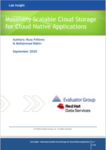
In this comprehensive technology white paper, “Massive Scalable Cloud Storage for Cloud Native Applications,”written by Evaluator Group, Inc. on behalf of Red Hat, we delve into OpenShift, a key component of Red Hat’s portfolio of products designed for cloud native applications. It is built on top of Kubernetes, along with numerous other open source components, to deliver a consistent developer and operator platform that can run across a hybrid environment and scale to meet the demands of enterprises. Ceph open source storage technology is utilized by Red Hat to provide a data plane for Red Hat’s OpenShift environment.
Overcoming the Complexities of New Applications & Technologies in the New Era of HPC

In this contributed article, Bill Wagner, CEO of Bright Computing, discusses how as more organizations take the leap into HPC, Bright Computing aims to be the company that helps solve the challenge of complexity within the industry and replace it with flexibility, ease of use, and accelerated time to value.
insideHPC Guide to QCT Platform-on-Demand Designed for Converged Workloads
In this insideHPC technology guide, “insideHPC Guide to QCT Platform-on-Demand Designed for Converged Workloads,”as we’ll see, by relying on open source software and the latest high performance/low cost system architectures, it is possible to build scalable hybrid on-premises solutions that satisfy the needs of converged HPC/AI workloads while being robust and easily manageable.
Where to Go and What to Do at Virtual SC20: These HPC Experts Give Guidance

As you plan for next week’s Virtual SC20, we thought it would be helpful to ask four HPC industry experts for guidance regarding the sessions, trends, news and other highlights worthy of your attention coming out of what one of our panelists, Dr. Thomas Sterling of the University of Indiana (and of Beowulf cluster pioneering fame), described as “a diverse and rich” program agenda.
insideHPC Guide to AI and HPC in Media & Entertainment – Part 2
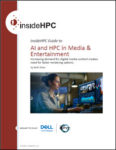
In this white paper sponsored by our friends over at Dell Technologies, we take a look at AI and HPC in Media & Entertainment where an increasing demand for digital media content creates need for faster rendering options. The ongoing increase in the use of visual effects (VFX) and computer-generated imagery (CGI) and animation in digital content media creation for television, movies, and streaming services has accelerated the amount of material that requires rendering, from a workstation to a data center render farm environment.



